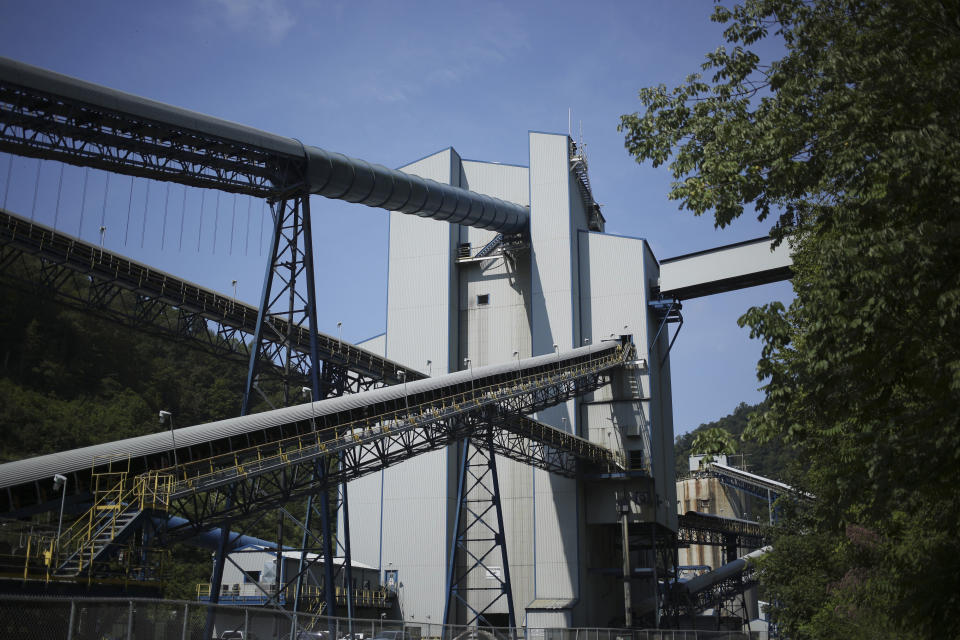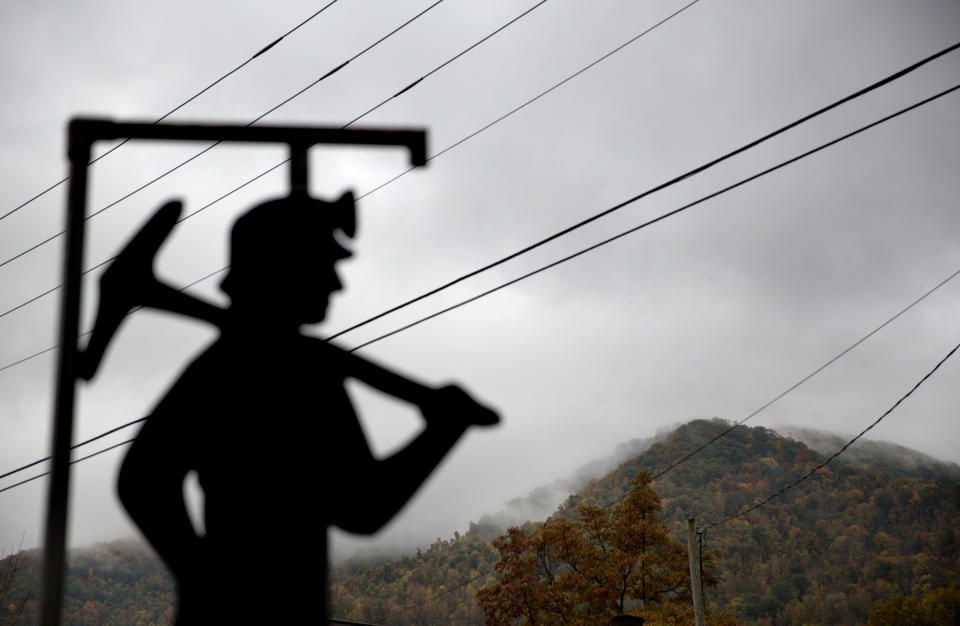Coal Baron: Subsidize Coal ‘To Make Sure Grandma Doesn’t Die On The Operating Table’

Bob Murray, the chief executive of coal giant Murray Energy Corporation, issued a grave warning to the nation’s leading renewable energy conference on Tuesday.
Subsidize coal-fired power plants, he said, or grandma gets it.
“You have a responsibility in this room to make sure grandma doesn’t die on the operating table,” Murray, 78, told an audience of energy analysts, investors and executives packed into the ballroom of the Grand Hyatt New York in midtown Manhattan.
In an impassioned 15-minute speech at the annual Bloomberg New Energy Finance summit, Murray repeatedly dismissed the threat of climate change and instead cautioned that the electrical grid risked collapse without reliable energy from coal-fired plants. He cited dramatic winter weather such as the “polar vortex” of 2014 or last January’s “bomb cyclone,” both of which brought Arctic temperatures to parts of the United States, as examples of times when alternatives like wind, solar and natural gas failed to compete with coal.
“That’s a crude way of putting it, but we were very close to it during this polar vortex and during this bomb cyclone,” he said. He pointed to a Department of Energy report stating that coal prevented widespread blackouts on the East Coast, though grid operators contested the findings to The Washington Post. One environmentalist accused the report of cherry-picking data and called it an “advocacy piece masquerading as analysis.” The Union of Concerned Scientists dubbed it a “bogus study to prop up coal plants.”
Scientists say storms like the polar vortex and bomb cyclone could become more frequent as global temperatures surge. The heat escaping from the surface water of oceans causes the polar vortex winds that swirl above the Arctic to weaken, allowing cold polar air to slip southward more often. The planet is heating up as a result of emission from burning fossil fuels, particularly coal. But Murray, who rejects the overwhelming scientific evidence that conflicts with his company’s business model, dismissed that problem.

“We have an energy problem in this country,” he said. “We don’t have a global warming problem.”
Murray has wielded unprecedented influence at the White House, quietly meeting with top cabinet officials to provide his draft of a so-called “action plan” for the administration’s energy and climate policies. The proposal included a federal bailout of coal-fired plants, repeal of the Obama-era Clean Power Plan and reconsidering the 2009 EPA “endangerment finding” that determined carbon dioxide pollution causes climate change and therefore poses a threat to public health.
Energy Secretary Rick Perry met with Murray in March 2017 to discuss the bailout plan and then proposed one in September. But the Federal Energy Regulatory Commission, in a break with the White House, rejected the proposal in January.
Last month, the Ohio-based utility FirstEnergy requested that the Energy Department provide financial support for its power plants under an obscure provision of the Federal Energy Act of 1920, which allows regulators to intervene in energy markets to stave off electrical reliability emergencies.
On Monday, Perry cast doubt over the plan in a speech at the same conference. But, the next day, Murray called on Perry to agree to FirstEnergy’s request.
“I’m an American first ― I represent the coal industry, and I’m probably the coal guy in this room ― but I’m an American,” he said. “Our power grids are not as reliable as the grid operators would like you to believe.”
“Will we have to have a system collapse before we really recognize that something has to be done about the security, resilience and reliability of the power grid?” he added.
The Trump administration is acceding to one of Murray’s other key asks. Environmental Protection Agency Administrator Scott Pruitt met with Murray at least twice in March 2017, and in October he announced a repeal of the Clean Power Plan, a suite of rules to reduce emissions from utilities.
But Pruitt’s push to host a televised debate on climate change ― an event many saw as a first step to reconsidering the carbon dioxide endangerment finding ― hit a snare when White House chief of staff John Kelly reportedly kiboshed the idea, deeming it too politically risky. Asked Tuesday what would be the top thing the Trump administration could do to help the coal industry, he said: “Eliminate the endangerment finding.”
Murray said former Rep. John Dingell (D-Mich.) warned him in the 1990s that, “if we ever say that carbon dioxide is a pollutant, we’re going to have a glorious mess in this country.”
“That’s exactly what we have,” Murray said. “A polarized, glorious mess.”
“It’s political correctness in the United States,” he added. “It’s politics.”
Yet Murray stands to score another victory this week. Andrew Wheeler, who worked as Murray’s lobbyist in Washington from 2009 to 2017, is poised to be confirmed by the Senate as the EPA’s deputy administrator as early as Tuesday, putting him next in line to lead the agency if Pruitt succumbs to mounting pressure to resign.
Wheeler could also lead an effort to reexamine the endangerment finding. In March 2010, he accused the United Nations Intergovernmental Panel on Climate Change of blurring “the lines between science and advocacy” and functioning “more as a political body than a scientific body,” according to remarks posted to his lobby’s firm’s website. He suggested the EPA could “reconsider its endangerment finding without almost exclusively relying upon the IPCC.”
Related...
Coal Baron Promises Huge Layoffs, Then Tells Workers To Vote Trump
2 Senate Democrats Vow To Confirm Climate-Denying Coal Lobbyist As EPA No. 2
Democrats Did Little To Stop A Climate-Denying Coal Lobbyist From Getting EPA’s No. 2 Spot
Also on HuffPost
Love HuffPost? Become a founding member of HuffPost Plus today.
10. Florida

> 2014 total electricity generation:231,062 GWh
> Coal as pct. total electricity generation: 22.5%
> Natural Gas as pct. electricity generation: 61.0%
Florida — the third-largest consumer of energy in the country — generated more than 52 thousand GWh of coal energy in 2014, 10th most of any state. However, there are no coal mining operations in The Sunshine State. All the coal burned in the state is shipped by barge and rail from other major mining states, primarily Illinois, West Virginia, and Kentucky. Florida is one of the most populous states in the country. So while the state produced the 10th highest amount of energy from coal in the country, this energy accounted for just 22.5% of the state’s electricity generation– well below the share of coal-based electricity generation nationwide of 38.7%. Natural gas is of greater significance in Florida. More than 60% of the state’s energy came from natural gas, the fourth highest share in the country.
Read more at 24/7 Wall St.
7. West Virginia

> 2014 total electricity generation:81,162 GWh
> Coal as pct. total electricity generation: 95.5%
> Natural Gas as pct. electricity generation: 0.8%
Last year, West Virginia generated the 19th most energy out of all states, producing roughly 81 thousand GWh. The state, however, generated the seventh most energy from coal, or 77,510 GWh. This amounted to 95.5% of West Virginia’s electricity generation, making West Virginia the most coal-dependent state in the country. This may not be surprising given the scope of the state’s coal mining industry. The state’s Appalachian Plateau region contains rich natural gas and coal deposits, and no state east of the Mississippi yields more coal each year than West Virginia. Roughly a quarter of the state’s coal stays in West Virginia, and the rest is shipped elsewhere to be turned into electricity. Consequently, while the state has just 0.5% of the country’s population, its resources are used to generate about 5% of total U.S. energy production.
Read more at 24/7 Wall St.
5. Kentucky

> 2014 total electricity generation:90,737 GWh
> Coal as pct. total electricity generation: 92.0%
> Natural Gas as pct. electricity generation: 2.7%
With 92% of Kentucky’s electricity coming from coal, only West Virginia relies more heavily on coal to keep the lights on. The state is the third largest producer of coal behind West Virginia and Wyoming, and one out of every four coal mines in the country can be found within the state. Roughly two-thirds of all coal mined in the state is exported. Apart from a small amount of hydroelectric energy, the state has almost no renewable energy generation at all.
Read more at 24/7 Wall St.
4. Illinois

> 2014 total electricity generation:202,352 GWh
> Coal as pct. total electricity generation: 43.2%
> Natural Gas as pct. electricity generation: 2.7%
The fifth most populous state in the country, Illinois is a large consumer of energy. The state generated, 87.4 million MwH from 57.4 million tons of coal last year. Over the course of the last decade, nuclear power and coal have been alternating as the state’s the leading energy source. Last year, however, more than 48% of the Illinois’ electricity came from nuclear power, while 43.2% came from coal. No other state in the country derives more electricity from nuclear power, and only three other states derived more electricity from coal in 2014.
Read more at 24/7 Wall St.
This article originally appeared on HuffPost.

